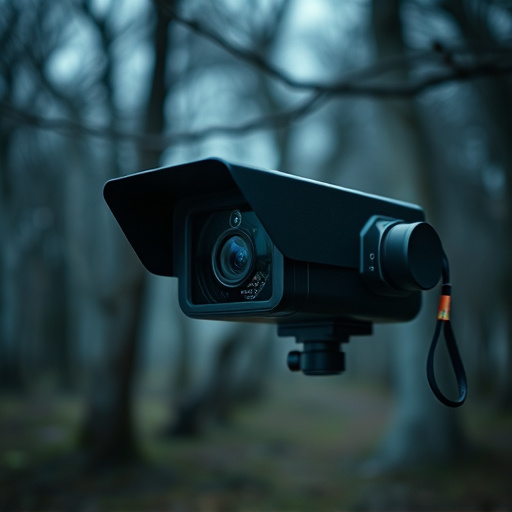Undetectable wireless security cameras, despite their stealthy advantages, raise serious privacy concerns due to their remote transmission and covert deployment capabilities. To counter this growing threat, advanced technologies like reflective surface analysis and sophisticated light sensor technology are being developed. These methods leverage subtle changes in light patterns, utilizing specialized software to detect anomalies indicative of hidden cameras, especially effective in high-traffic areas. With applications ranging from government buildings to smart homes, these detection techniques offer valuable solutions for surveillance and public safety while future perspectives include integrating machine learning to keep pace with evolving camera technology.
Undetectable wireless security cameras have emerged as a modern-day concern, raising questions about privacy and security. This article delves into innovative detection methods, specifically exploring the light reflection technique. We unravel the science behind this approach, its practical applications in identifying hidden cameras, and the challenges it overcomes. By examining current perspectives, we offer insights into future advancements, ensuring individuals stay informed about potential threats and available countermeasures against undetectable wireless security cameras.
- Understanding Undetectable Wireless Security Cameras
- The Science Behind Light Reflection Detection
- Implementation and Practical Applications
- Overcoming Challenges and Future Perspectives
Understanding Undetectable Wireless Security Cameras
Undetectable wireless security cameras have evolved as a sophisticated means of surveillance, often employing advanced technologies to evade traditional detection methods. These cameras, designed for stealth, utilize wireless transmission protocols that allow them to send footage and receive commands remotely, making them nearly invisible to the naked eye. Their compact size and ability to blend into surroundings make them ideal for covert operations, raising significant privacy concerns.
While their undetectable nature presents a challenge, it also sparks awareness and innovation in countermeasures. Reflective surface analysis and advanced light sensor technology are being explored to identify subtle anomalies that might indicate the presence of such cameras. By understanding how these devices operate, security professionals can develop strategies to detect and counteract their use, ensuring a more secure environment in an era where privacy is paramount.
The Science Behind Light Reflection Detection
The science behind light reflection detection involves utilizing subtle changes in light patterns to uncover hidden devices, particularly undetectable wireless security cameras. This technique leverages the fact that any object reflecting light—be it a camera lens or a window—will produce a unique pattern of reflections and distortions. By analyzing these variations, specialized software can identify anomalies indicative of a hidden camera.
The process typically involves capturing multiple images from different angles using advanced sensors designed to detect even the faintest light signals. These images are then cross-referenced with known patterns to determine if any match signatures associated with spy cameras. This method is particularly effective in high-traffic areas, where natural light fluctuations and reflections can mask the presence of an undetectable wireless security camera.
Implementation and Practical Applications
The implementation of light reflection techniques for spy camera detection is a sophisticated process that involves advanced optical sensors and image processing algorithms. By analyzing subtle variations in light reflections, these systems can identify hidden or undetectable wireless security cameras. This technology has become increasingly valuable in various practical applications, such as surveillance, public safety, and counter-espionage.
In real-world scenarios, the method is employed to detect covert surveillance devices in sensitive areas like government buildings, critical infrastructure sites, and private residences. Its ability to pinpoint camera locations without physical inspection makes it a game-changer in ensuring security and privacy. The practical applications extend beyond traditional settings, with some systems now integrated into smart home devices, offering homeowners an extra layer of protection against peep cameras.
Overcoming Challenges and Future Perspectives
Overcoming Challenges:
Detecting undetectable wireless security cameras has presented unique challenges for law enforcement and private investigators. These miniature, advanced cameras often employ advanced hiding techniques, making them nearly invisible to the naked eye. However, advancements in technology are offering innovative solutions. One approach involves utilizing light reflection analysis; by strategically placing lights and studying reflections, professionals can uncover hidden cameras. This method requires expertise and meticulous observation, but it’s proving effective against increasingly sophisticated surveillance equipment.
Future Perspectives:
As the demand for more subtle and advanced security systems grows, so does the need for robust detection methods. Researchers are exploring new techniques, such as advanced image processing algorithms that can analyze video feeds for unusual patterns indicative of hidden cameras. Additionally, integrating machine learning could enable systems to adapt and learn from new camera designs, enhancing their undetectability-busting capabilities. These future prospects offer promising paths toward countering the evolving landscape of wireless security camera technology.
Undetectable wireless security cameras, once a clandestine concern, are now a reality that demands our attention. Through the science of light reflection, researchers have developed innovative techniques to expose these covert devices. This article has explored the understanding, technology, and practical applications behind this method, highlighting its effectiveness in various scenarios. While challenges remain, future advancements in light reflection detection promise even greater precision and accessibility, revolutionizing the field of security surveillance. By staying informed about these developments, we can ensure a safer digital landscape, making it harder for undetectable cameras to operate under the radar.
